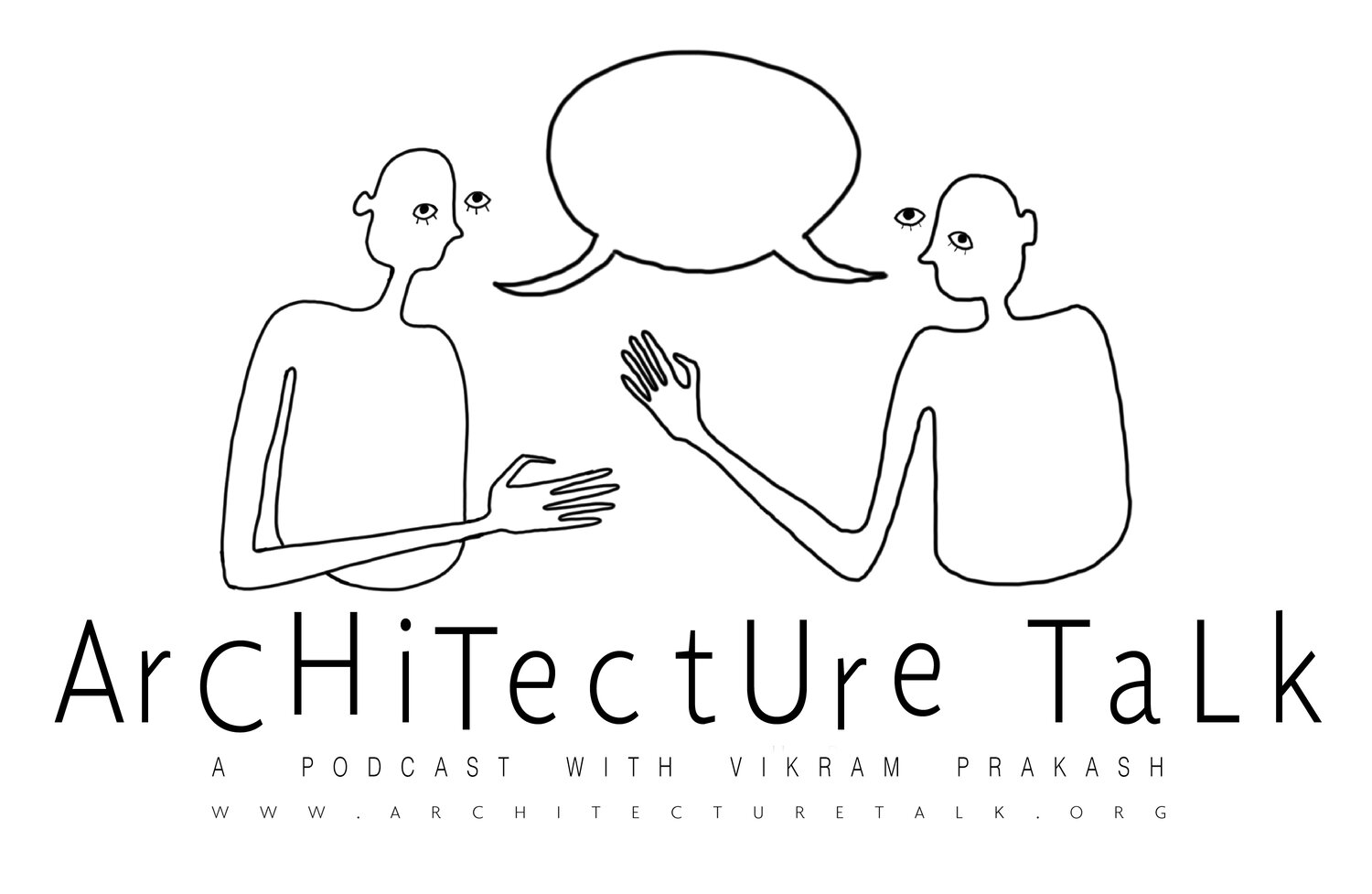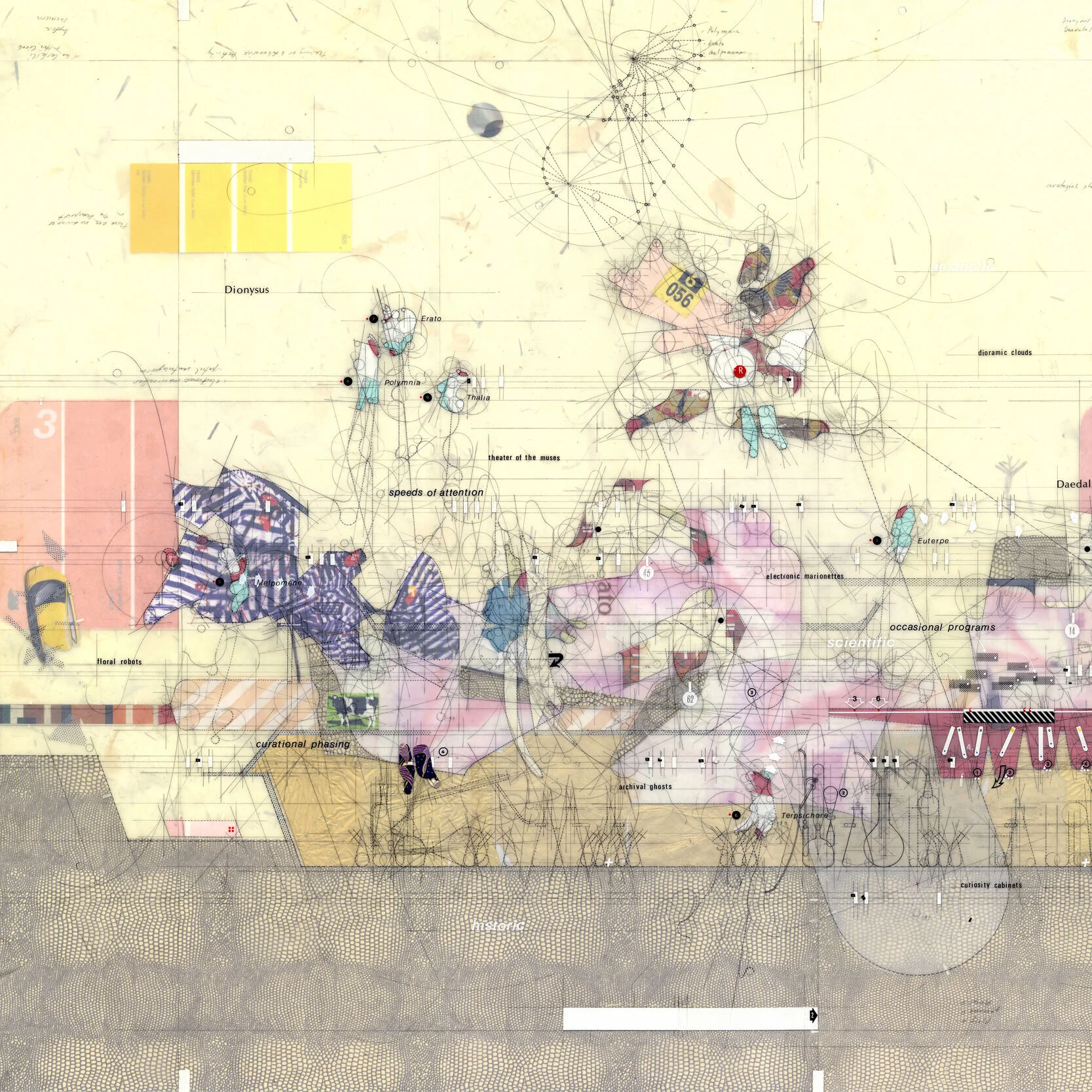67. AITC: The Amateur and the Detective with Perry Kulper
Central California History Museum: Proto_Formal Section by Perry Kulper 2006
“The use of [relaxed] language might allow us new conceptualizations of how we might navigate...or broaden how we think about heterogeneity, difference, things that can’t be named, or aren’t categorizeable, things that drop us into a horizon of disorientation but where we might develop plasticity as architects…”
- Perry Kulper
What is architecture and what is its frontier of thinking in the time of Corona virus? This week, we talk with architect and architectural thinker Perry Kulper about his work methods, inspirations, drawing techniques, and thoughts on the current pandemic.
Timestamp Outline
2:30 How do we name things? How do we make them what they are? What happens if we relax the naming of conventions?
3:30 “We need to name things and categorize things so that they have cultural handles and we can share information and knowledge in certain ways...and naming often precludes what we are trying to structure.” PK
4:00 investigative techniques: the amateur and the detective
5:05 reorienting ourselves as wilderness seekers
5:50 “The surrealists often seemed to be willing to work against conventions, namings, and categories” PK
6:25 “The use of [relaxed] language might allow us new conceptualizations of how we might navigate...or broaden how we think about heterogeneity, difference, things that can’t be named, or aren’t categorizeable, things that drop us into a horizon of disorientation but where we might develop plasticity as architects…” PK
8:30 “What are the words that you are flailing against in proposing this honkytonk wilderness? What kind of relaxed metaphor of wilderness would you throw on the city?” VP
9:30 discussion of urban agilities, relational dynamics, eastern versus western cities
12:38 “It seems to me that the six feet [rule] and social distancing order is a non-flexible way to approach the issue. Do you agree with that?” VP
13:10 “I wondered: as a result of the pandemic, what would the new Vitruvian character be? [...] Could we begin to produce an alternative diagram, which is not simply human-centric, or male dominant...” PK
15:20 Neil Spiller’s conception of reflexivity
16:08 Hugh Ferris in Gotham
18:30 “...you talk about cracks and small misalignments...where do you think the slippages will start occuring through which changes might actually start happening?” VP
19:45 notes on reformulating what we’ve taken for granted
22:10 “One of the things that you do really really well is to crack open the realms of possibilities of architecture...in terms of culture and architectural thinking...what is architecture?” VP
22:40 “I never have a definitive answer, but I think what we do...is structure...relational assemblies or relational contours that are linked temporally and the representational and spatial things that come out of that have to do with affordances to living our lives in the fullest capacities possible...” PK
24:20 “Talk to me about the body in all this.” VP
26:25 The modernist question of architecture and health
30:00 Drawings as speciations, ecologies and tools for navigating worlds
31:30 “When I read your litany of reprograms...it seems to me these also feel like dreamscapes, free-associated, subconscious landscapes…” VP
32:50 “They were meant to invent programmatic logics to foreground and position the ideas and interests...the content of the work.” PK
33:55 Discussion of Perry’s work method
38:50 “I will often trade on analogous material like magicians, amateurs, and detectives...the analogic thinking allows me to get outside my own authoring predilections...so I need to work a bit like an alchemist.” PK
42:47 Paul Klee’s Nightingales and twittering machine
45:50 discussion of reconstructing priorities





